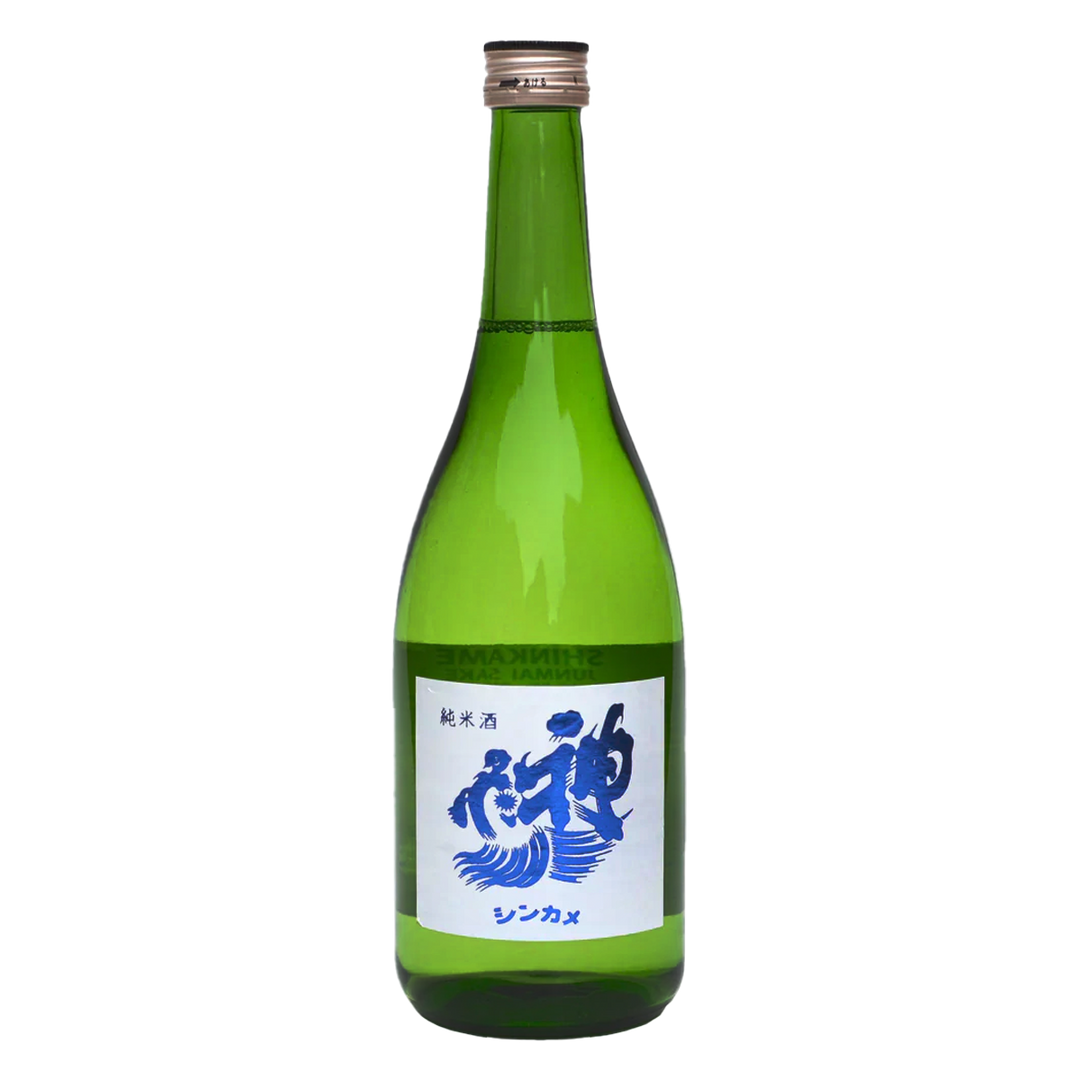
Shinkame Junmai, "Turtle God"
- In stock, ready to ship
Shinkame Shuzo
Location: Saitama
Rice: Gohyakumangoku (Chiba) grown without added artificial fertilizers, only fallen leaves and recycled rice straw.
Polishing: 60%
Press: Fune
Starter: sokujo
Aging: 2-5 years (blend)
A lot of breweries claim to be leaders in the mid-century return to junmai brewing (no alcohol added) but Shinkame is really, actually a central part of that story and one of the very first trailblazers. The brewery president endured relentless harassment from government, banks and suppliers, persisting even in the darkest times so that now, today, pure rice sake-- Junmai-- can enjoy the glorious spotlight. The full history can be read in this wonderful article as well as on wineterroirs so I won't endeavor to paraphrase and rewrite, but what's important to know is that Shinkame is historically very important and totally committed to junmai. Incidentally, Moriki Shuzo-- makers of Tae no Hana-- were also in this very first wave of junmai-only breweries and back in the early 70s, the owner of Moriki Shuzo came to Shinkame for advice and help both in brewing and in dealing with the tax administration's pushback.
Shinkame Shuzo was established 1848 and the 8th generation, in my importer Carrie's words, "he's amazing, he tastes every day, he drinks an isshobin every day to keep his palate trained." The brewery is tucked away in the remotest area of Saitama surrounded by bamboo forest and the operation is super tiny. You feel like Shinkame started as a very small brewery but because they've been around so long and they age everything, there is this unbelievable, surreal sprawl: countless tanks are scattered throughout the property. Walking around the Shinkame bamboo forest is waking through a maze, big containers tucked in every nook and cranny, 6-7 kiloliters each, storing stuff since the Showa period.
So the brewery is really efficient but also really old, doing with whatever space they can. Rice steaming is done in a square Koshiki (very rare, localized to Saitama and Niigata) which the president says is easier to maintain and for cleanliness. The brewery has 9 kurabito and 18 total employees. All live on site in a little house and are employed year round but don't brew year round, starting in September and ending in late March. The incredible maintenance of back vintage sake occupies the workers in the off season.
Pre-pandemic they were doing 800 koku which is already tiny, but since the pandemic they are producing 550 koku/year. They have this luxury because everything they release is extremely high quality and well aged, so they can afford to contract in size in the short term while making enough to sustain the business.
As for the Junmai, officially this is 2 years old but really it's closer to five years. Labeling laws insist that you have to date blended aged sake according to the youngest component, rather than the average.
With such a maze of old tanks, many of which aren't even labeled, and remarkably consistent blends being released year to year one wonders how the president keeps track of everything. He says, "that's why I taste every day. I taste constantly to remember and to intimately know each tank. I've been doing this forever-- I just remember."
Koji is produced using small boxes (hegi) on a micro scale, stacked 6 wide and 8 high, over 48h. Rice is polished more than average: even the junmaishu uses 55-60% polish rice, and the fermentations are cool (~7C) so that the rice dissolves slowly and delicately. Everything is pressed in unusually tall and narrow fune (traditional wooden lever press) over 2 days. The kasubuai, a measure of the remaining kasu (solids) after pressing is an unbelievable 38% for the junmai, 48% for the daiginjo. They source their rice from relatively unusual places: Yamadanishiki from Tokushima and Tottori, Gohyakumangoku from Chiba. In the president's opinion the quality is better for his purposes: for instance the Yamadanishiki a little shorter and less protein than Hyogo. Only two different yeasts are used for the entire production, 7 and 9.
The president wants Shinkame to be enjoyed at room temperature or warm. Carrie remarked that in an utterly unique maneuver, the president demonstrated during a tasting how to warm sake with a candle. Carefully, he pulled out a candle and started heating a tokkuri over the flame. He knew exactly how to heat it just a few degrees. Never seen this before.

